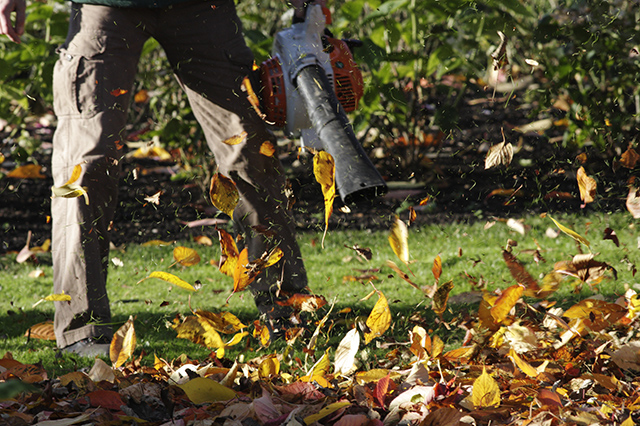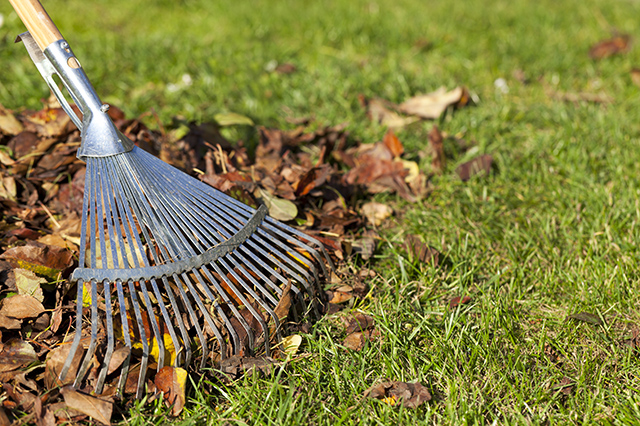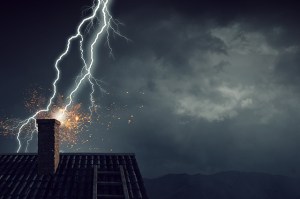For many people, fall is their favorite time of year. It’s not too hot and not too cold, there’s a holiday all about eating candy and a second holiday all about eating way too much dinner, and it’s when the leaves make their colorful transition.
But if you have a house and a lawn, you might be dreading the time of year when the leaves start to fall. Landscaping fall cleanup can be a chore but it is necessary to maintain both the beauty and safety of your property.
What should you be doing to prepare your lawn and garden for winter? Here are a few landscaping tips.
Fall Leaf Cleanup
Ideally, you should clean up fallen leaves once a week. Too many leaves can damage your lawn, because deep leaf cover blocks the grass from getting sun. Some people don’t have time to do leaf cleanup every week, but try to do it on a regular basis. Don’t leave it all for one big job at the end of the season – that’s too much for anybody to handle, and your lawn will look pretty scraggly by the time you uncover it.
One of the easiest ways to deal with fallen leaves is by using a mulching mower. A mulching mower will break down leaves and filter them back into the lawn. Chopped up leaves make a tasty mulch snack for the grass. This method works best for yards that only have a slight leaf cover – too many trees and leaves will probably require you to go over your lawn a few more times with the mower. If you want you can collect your leaf scraps into a lawnmower bag and use them as nutritious mulch for other parts of your garden.
If you’d like to use a leaf blower, just be sure to do it on a dry day. Wet leaves make the task much more difficult, since they stick to the ground and to each other.
The easiest way to collect your leaves is to rake them onto a leaf tarp or drop cloth. You can drag the tarp along with you as you build up your pile, then you can deposit your collected leaves as you see fit (or as your town sees fit). It’s much easier than having to deal with a bunch of loose piles all over your yard. Even if you have to use a leaf bag, the tarp can make for an excellent funnel (with the help of another pair of hands to hold the bag). It makes the whole process a lot easier.
A wide rake that doesn’t snag on too many leaves can also make the task go a lot faster.
Another important part of leaf cleanup is clearing fallen leaves from your home’s gutters. Clogged gutters could contribute to ice damming in the winter, one of the most common winter insurance claims. Caused by snow melting on a warm roof, ice damming occurs when water runs down and freezes at the eaves. As the dams melt, they can leave water pools that can seep into your home and cause water damage. Clean gutters won’t eliminate the possibility of ice damming, but it will certainly decrease it.

Landscaping Fall Cleanup: Lawn Care
Fall is a great time to give your lawn some extra love and care, since it’s probably facing some rough winter months ahead.
This is a good time to aerate your lawn. Aerating is almost impossible to do once the ground is frozen, so you should take care of it while you’re doing landscaping fall cleanup.
An aerator is a tool that plunges out “plugs” of soil and pulls them out of the lawn, creating small holes. This helps to loosen soil that has become too densely packed, and it gives the roots some breathing room to access water, air and other important nutrients. Don’t worry about picking the plugs up – they will break down on their own and return their own nutrients to the lawn.
The easiest way to aerate is to do it when the soil is moist and it’s easy to pull the plugs out. Even though the soil is already wet, you should thoroughly water the lawn after you aerate it.
This is also the perfect time of year to fertilize your lawn and garden (which you can even do with some of the leaves you mulched earlier). Just make sure you apply your fertilizer about two or three weeks before the ground freezes. That’s when it can have the most impact, strengthening root and blade growth. After you apply fertilizer, water your lawn so that the fertilizer sloughs off the blades of grass and goes into the soil.
Trees and Branches
Leaves aren’t the only things that can fall down. In fall, you’ll have a better view of the trees and branches near your house, and you’ll be able to tell which limbs are diseased or dying. Although you can plan which limbs to prune throughout fall, it’s better to wait until very late in the season. Limbs that are pruned too early in fall could become diseased or even spur regrowth. When the cold has truly set in (mid to late November in the Northeast), then you can get to it.
But why prune your trees? Pruning can excise dying and diseased branches, it’s true, but it can also make your tree stronger and more attractive. It will also let more light onto your yard and into your house, which you’ll need as the daylight hours get shorter.
Dead and diseased branches that can fall create an insurance risk. If they just fall onto your lawn, that’s no big deal. But if they fall on your house, a car or walking pedestrian, that can be a big problem. Pruning also reduces the amount of branches that could fall during a heavy storm.
Learn how you can protect your home from weather-related risks and liabilities with homeowners insurance through AAA.
If your branches require a ladder to reach, or if you are inexperienced with sharp tools, calling a landscaper or arborist to groom your trees is the safest option.
What’s your go-to method for landscaping fall cleanup? Let us know in the comments below!
19 Thoughts on “Landscaping Fall Cleanup for Your Home”
Leave A Comment
Comments are subject to moderation and may or may not be published at the editor’s discretion. Only comments that are relevant to the article and add value to the Your AAA community will be considered. Comments may be edited for clarity and length.















We use a riding mower with bagger and leaf blowers. We’ve been mulching the leaves and grass in two large sink holes in our wooded back yard since 1988 and they still haven’t filled up. Our township collects brush in trash cans and bundled branches every few weeks along with other folk’s bagged leaves and mulch it all at a Town Ecology Center.
First, I make rows of leaves with my blower. Second, I run the leaves over with my mulching mower w/ bag. When bag fills up, dump leaves into trash cans to be emptied by Town.
My neighbor and I bag my leaves. He uses them as mulch at his community Plot. I use some on my garden also, rather than buying mulch in the spring.
Please do not use a leaf blower, and especially please never use a gasoline-engine-powered leaf blower. They are highly polluting, very harmful to your health, to the environment, and can ruin your hearing. It’s just as easy and much, much healthier and safer to just use a simple fan-rake. The ‘secret’ to making this nearly effortless and very effective is very simple: Keep both thumbs up on the handle and use a sweeping motion. Thank you.
I bag them with my John Deere riding mower and dump them in the woods behind my house. If I didn’t have the woods I’d hire someone. The yard is too big with too many trees!
Put on compost pile
I use a 5 hp pressure washer with a fan spray tip. Sounds crazy, but works great – better than any hand held blower, and as good as any backpack blower. Why? 1 – the wand is much lighter than any blower, with no gyroscopic inertia to deal with. 2 – the high speed/ pressure water creates a lot of air turbulence which can push and lift a wall of leaves. 3 – hitting the leaves with a bit of water helps them resist swirling back over head and down to where they were. All of the 5 hp goes into moving leaves. Which is more power than you can carry and wave around. I filmed a side by side comparison test after a heavy leaf drop, my good back pack blower in one hand, wand in the other. Wand won hands down. Some day I’ll post it on youtube.
I built a 9′ long, 3 section, compost bin this summer. I’m hoping most of my leaves fit in there.
I use a lawn tractor with a twin bagger. The twin bags provide ample pick-up capacity with a minimum of effort. While the mower blades on the tractor do not mulch as well as a mulching mower, there is some reduction in volume as the leaves are picked up and deposited into the bags. I have used this method for many years with great results.
LAWN VACUUM
I raked leaves for about 60 years and got tired of it, so I got a lawn vacuum, a 4.5 horsepower vacuum cleaner for the lawn that I push like a regular walk-behind gas mower, with a big bag. Even though it grinds up the leaves a little after sucking them up, I still have to empty the bag about 7 times on my 1/8 acre lawn. I dump them in the gardens then rototill them in the spring in the vegetable garden and leave them like mulch in the flower gardens. First I use the leaf blower on the porches. I leave all the leaves that fall in the street and by sometime in the winter they have been ground into the gutters, then I scoop them out and dispose of that cruddy gutter stuff.
This article is so helpful! Having to deal with leaves in the garden can be a nightmare this time of year!
I pick up my leaves with my riding mower and dump them into a giant pit at the back of my yard for composting . I spread it in the garden in the spring.
I use leaves for composting to break down and add to gardens.
I do a combination of a gas powered leaf shredder placing the bagged leaf pieces in a compost pile, mulching lawn mower with a thin layer of leaves while the grass is till growing (adds necessary nitrogen to the compost pile) and bagging leaves that my town picks up for a town composting facility.
I hire someone to do it. Much easier on the back.
You’ve got the right idea haha
I reduce leaves with the lawnmower and bag at same time, then deliver to recycling. Try to do this weekly for 6 weeks necessary.
I pick up leaves on grass surfaces with riding lawnmower bagger and on my mulched and other surfaces I blow them into my small mower with bagger and I keep it running with a small clamp on the handle. NO Raking.